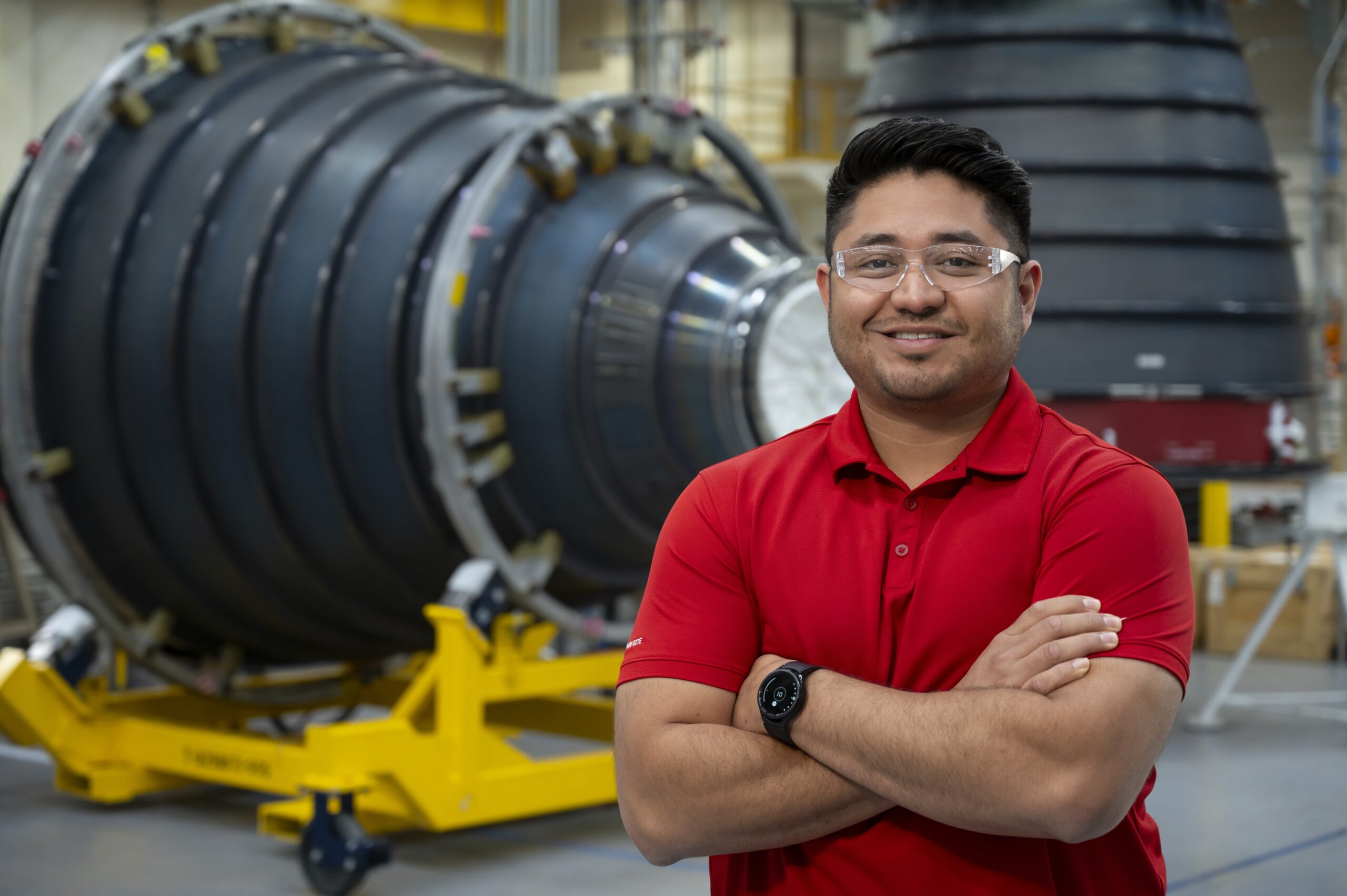Chris Pereira’s Journey from Guatemala to NASA’s Artemis Program
Chris Pereira can personally attest to the immense gravitational attraction of black holes. Ever since he watched a video about them in a high school science class, he has been captivated by space. This wasn’t any ordinary science class; it was specifically designed for English learners, which played a crucial role in shaping his future.
"I was born and raised in Guatemala," Pereira explained. "I came to the U.S. at 14 without knowing any English." Navigating the U.S. educational system was initially a challenge for Pereira, but that science class ignited a passion for space that would guide his career aspirations.
Pereira’s journey eventually led him to L3Harris Technologies, where he now works in the Aerojet Rocketdyne segment. Here, he serves as an engineer and operations integrator on the RS-25 engine, which powers NASA’s Space Launch System (SLS) rocket. This rocket is integral to NASA’s Artemis campaign, which aims to return astronauts to the Moon.
His first step toward this career began when he stayed after class to ask if he could borrow the video on black holes. His teacher not only agreed but also took him to the local library to get his first library card. This moment marked the beginning of Pereira’s pursuit of higher education.
Pereira quickly realized that to achieve his dream of working in space, he needed to pursue higher education. However, he also recognized that he was not yet on that pathway. Classes designed for English as a Second Language (ESL) students, including his science class, did not count toward college admissions. Additionally, his guidance counselor initially steered him toward trade careers.
With the help of supportive teachers and a new guidance counselor, Pereira managed to get on a college-bound track. "I came to understand there were multiple career pathways to explore my interest in space," Pereira said. "One was engineering."
To catch up, Pereira took eight classes per day, including honors courses. After school, he worked from 6 to 11 p.m. cleaning a gymnasium to help support his family. His hard work paid off when he earned a mechanical engineering degree from California State University at Los Angeles. During his college years, Pereira also worked as a senior educator at the California Science Center to cover his tuition and living expenses.
Pereira’s first professional experience came as an intern in manufacturing engineering at Aerojet Rocketdyne. "I learned that making 100% mission-success engines requires a strong culture of attention to detail, teamwork, and solid work ethics," Pereira said. His first full-time engineering job was with Honeywell Aerospace, where he worked on aircraft programs.
Eventually, space called him back—literally. "My mentor at Aerojet Rocketdyne called me up and said, ‘Chris, I have a job for you,’" Pereira recalled.
He started his new role working on rocket engine programs, including the AR1 and RS-68. However, he soon shifted to the RS-25 after NASA awarded Aerojet Rocketdyne a contract to manufacture new versions of the engine. Early versions of the SLS use refurbished engines from the Space Shuttle Program. The evolved RS-25 engines recently completed a critical test series and will debut with the fifth Artemis flight.
As the operations integrator for the RS-25, Pereira ensures that all aspects of the program come together smoothly. This includes tracking the timely procurement of supplies, managing labor loads, and coordinating priorities at various machine centers to deliver a quality product.
For Pereira, playing a key role in the nation’s effort to return astronauts to the Moon feels like coming full circle. "You develop your first love, work really hard, take different pathways, and encounter new passions," Pereira said. "It’s almost funny how the world and life work out—it’s like I’ve taken a big circle back to my first love."
NASA’s Artemis program aims to land the first woman, the first person of color, and its first international partner astronaut on the Moon. The SLS rocket is a cornerstone of NASA’s deep space exploration plans, along with the Orion spacecraft, supporting ground systems, advanced spacesuits, rovers, the Gateway space station in lunar orbit, and commercial human landing systems. The SLS is the only rocket capable of sending Orion, astronauts, and supplies to the Moon in a single launch.
For more stories about the people behind NASA’s Artemis program, you can read other features on NASA’s I am Artemis page.
For more Information, Refer to this article.


































